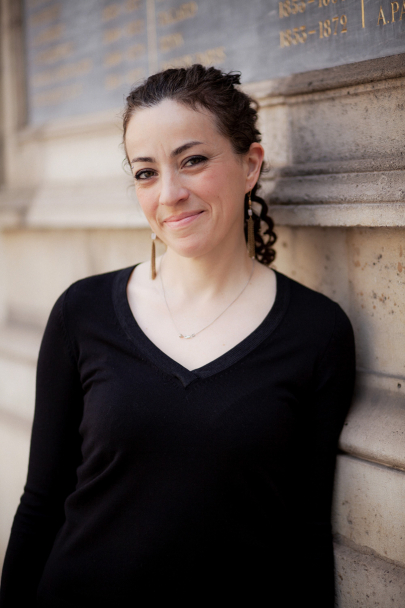Marie ManceauCentre interdisciplinaire de recherche en biologie (CIRB) - CNRS / Inserm / Collège de France
Mes recherches
Pois et tâches, zébrures et polygones… Les motifs qui parent les animaux sauvages sont aussi divers qu’ordonnés ; un paradoxe qui fascine aussi bien les mathématiciens que les biologistes ! Mon intérêt pour ces « patterns » est né d’un mélange, celui de ma thèse (à l’institut de biologie du développement de Marseille encadrée par le Pr. Marcelle), au cours de laquelle j’ai étudié le développement précoce du muscle chez l’oiseau (le poulet domestique), et de mon postdoc (à l’Université d’Harvard dans le laboratoire du Pr. Hoekstra), ou j'ai redécouvert le travail de terrain et la variation naturelle pour étudier les motifs pigmentaires bicolores ou rayés observés chez certains rongeurs, des plaines du Nebraska aux déserts du Nouveau-Mexique. Ainsi aujourd’hui, les modèles aviaires de ma thèse ont été rejoints par des passereaux, émeus, autruches, et parfois même quelques manchots (les régions polaires sont une passion). Au laboratoire, situé au Centre pour la Recherche Interdisciplinaire en Biologie du Collège de France, à Paris, leur diversité nous sert d’outil. Modéliser mathématiquement et décrire biologiquement les différents patterns dans le plumage permet de trouver des thèmes dans la variation, et ainsi d’éclairer les principes qui régissent la mise en place des motifs naturels.
Mon projet ATIP-Avenir
Formation and Evolution of Color Patterns in Natural Populations
The distribution of color across the body (i.e., color pattern) is a crucial morphological trait involved in survival and reproductive success which varies tremendously both within and between species. Despite their ecological importance, the genetic and developmental mechanisms responsible for the formation and variation of naturally-occurring color patterns have remained a black box. New molecular tools and recent technical advances in functional approaches now make it possible to address this question in non-conventional model species that display ecologically relevant pigment patterns. I propose to use populations of small birds and rodents to dissect the cellular and molecular events governing the formation of representative color patterns and decipher how changes in these mechanisms contribute to natural variation in this trait.
First, I will characterize in the zebra finch embryo (genus Taeniopygia) the developmental events that establish discrete domains in the skin, and more generally, procure positional signaling in the embryo. Second, I will pinpoint the genetic changes underlying variation in color patterns in birds using a quantitative genetic approach in finch species displaying variation in the extent and position of typical color domains. Third, I will use striped mice (genus Rhabdomys) to unveil the nature of the molecules contributing to the formation and evolution of periodic color patterns. Together, my research will describe the genetic and developmental bases of color patterning, and broaden our perspective of color pattern evolution by shedding light on the embryonic events constraining (or promoting) their variation in vertebrates.
Marie Manceau est également lauréate ERC Starting Grant 2015
